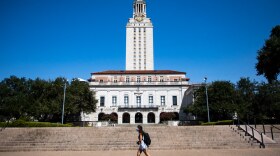-
The Republican leader cited concerns about federal funding for the Summer Electronic Benefits Transfer program. The decision is a setback for struggling families and anti-hunger advocates.
-
Texas is one of about a dozen states that won't be participating in a federal program that provides families with $120 per eligible child to buy groceries while school is out.
-
The Central Texas Food Bank says 1 in 6 Hays County residents experience food insecurity. A lack of grocery stores and public transit is contributing to the problem.
-
While Texas missed the Jan. 1 deadline to confirm whether it will participate in the federal food assistance program, federal officials say there’s still time to get on board. Summer EBT could bring nearly $18 million in aid to families in the Austin area if the state launches the program.
-
Texas was one of 13 states last year that did not participate in a new federal program providing eligible families with $120 per child over the summer to help pay for groceries while school is out. The state must say whether it plans to participate in the Summer EBT program by Jan. 1.
-
The new food plan looks to bring together community partners and stakeholders to implement better practices to divert food from landfills and to expand and improve food composting efforts.
-
The Hays County Food Bank is relocating to a bigger space to accommodate the growing need for its services. The food bank expects to distribute more food this year than ever before.
-
An Austin-area food bank wants students to get healthy meals, so it opened a food pantry at a schoolThe Central Texas Food Bank officially launched its Feeding Futures School Pantry Program at a Del Valle ISD elementary school on Wednesday. The organization hopes to provide 30 meals per student each month.
-
The soup will go to the university's food pantry. The Food for Fines program runs through March 24.
-
Starting this month, Texans who use SNAP benefits to buy groceries will have an average of $212 less per month to buy groceries, as pandemic-era increases to the food assistance program are ended.
© 2025 KUT Public Media
A service of the Moody College of Communication at the University of Texas at Austin
webmaster@kutx.org
A service of the Moody College of Communication at the University of Texas at Austin
webmaster@kutx.org
Play Live Radio
Next Up:
0:00
0:00
Available On Air Stations







